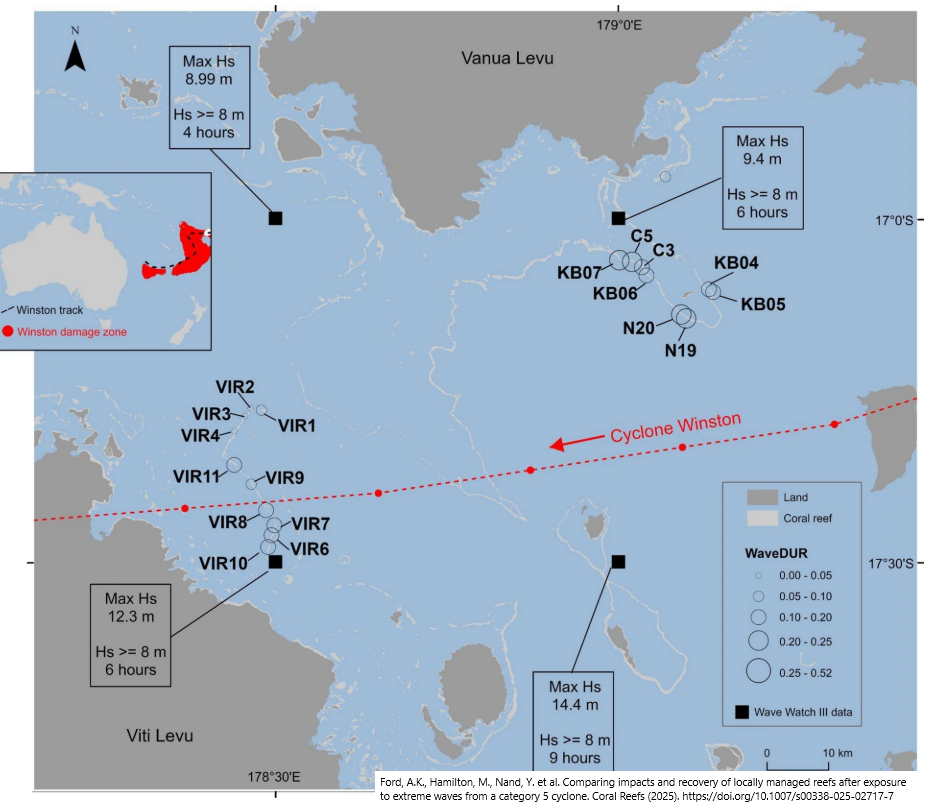
As the climate warms, coral reefs face more frequent and severe impacts from thermal stress while a greater proportion of tropical cyclones are expected to reach the strongest categories. Understanding the impacts of extreme cyclone waves and reef recovery dynamics is essential to support projections of reef communities under future climate scenarios. We present an evaluation of 18 sites across two large barrier reef systems in Fiji under varying forms of local management using data collected prior, directly after, and four years following Tropical Cyclone Winston (2016), which generated extreme waves 11 standard deviations above the long-term average. Our study aimed to: (1) determine how storm wave energy links to changes in hard coral cover; (2) quantify the impact and recovery of benthic communities on reefs with different management interventions; and (3) assess fish community trajectories in relation to observed differences in benthic communities and/or management. The cyclone’s impact on benthic communities was severe, with a relative loss of 54 ± 8% hard coral cover (primarily branching and plating Acropora) and corresponding increases in rubble and turf algae. However, hard coral recovery and reassembly by 2020 was rapid and extensive, indicating high resilience. Fish biomass was consistently high with variable effects of no-take areas, and functional groups were minimally impacted by the cyclone. No-take areas did not promote faster recovery, but all sites were removed from local impacts, known to be highly productive and exposed to strong currents that are expected to facilitate high resilience. Identifying and prioritising resilient sites for management is crucial for the future of coral reefs.














